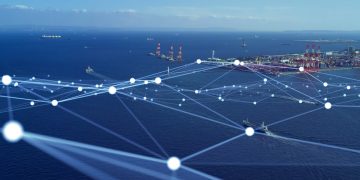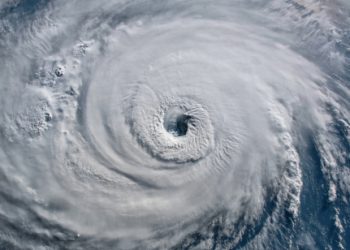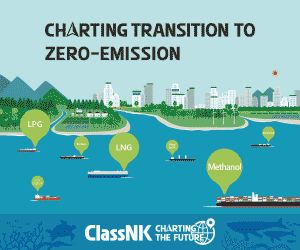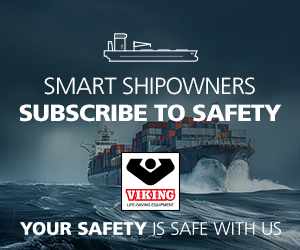
NOAA scientists and partners are launching a number of new unmanned aircraft and water vehicles to collect weather information as part of a coordinated effort to improve hurricane forecasts.
Several of these research projects and other NOAA led efforts to improve hurricane forecasting were made possible, in part, because of the Disaster Relief Appropriations Act of 2013. The act was passed by Congress and signed by the President in the wake of Hurricane Sandy. It provides $60 billion in funding to multiple agencies for disaster relief. NOAA received $309.7 million to provide technical assistance to those states with coastal and fishery impacts from Sandy, and to improve weather forecasting and weather research and predictive capability to help future preparation, response and recovery from similar events.
Unmanned Planes Gather Storm Details
As hard as meteorologists work to forecast storms – even flying planes straight into hurricanes to measure wind speed, direction, water vapor and other data – prediction remains an imprecise science. This is particularly true when forecasting hurricane wind speed, known as hurricane intensity.
 To improve this predictive aspect of our environmental intelligence, NOAA scientists and partners are sending unmanned aircraft into places where it would be unsafe, impossible or prohibitively costly for manned aircraft to fly. By using dropsondes -instruments that are dropped into storms to measure weather data – and other sensors on unmanned aircraft, researchers are gathering information on a storm’s structure, intensity and evolution.
To improve this predictive aspect of our environmental intelligence, NOAA scientists and partners are sending unmanned aircraft into places where it would be unsafe, impossible or prohibitively costly for manned aircraft to fly. By using dropsondes -instruments that are dropped into storms to measure weather data – and other sensors on unmanned aircraft, researchers are gathering information on a storm’s structure, intensity and evolution.
Such targeted observations help significantly improve forecast models for predicting hurricanes, especially when the data can be gathered on a nearly continuous basis for an extended period in areas not now being observed. This fall, NOAA will join with NASA to launch two 115-foot wingspan Global Hawks. These unmanned aircraft will take off from Wallops Island, Va., on several data-collecting missions during five weeks at the height of Atlantic hurricane season. “With the Global Hawk we can fly farther out over the ocean and get to storms that manned aircraft cannot reach. We can look at storms when they first come off the coast of Africa,” said Robbie Hood, director of NOAA’s Unmanned Aircraft Systems program. “Getting these data early in a storm’s life cycle is critical to understanding and predicting its ultimate evolution. Our goal is to begin using unmanned systems to improve weather operations and the Sandy funding is helping us move toward this goal.”
NOAA Research scientists at the Atlantic Oceanographic and Meteorological Laboratory (AOML) and partners are also testing smaller unmanned aircraft to collect weather information at the boundary between the ocean and the atmosphere. These aircraft – called Coyotes – are scheduled to be launched in late August from aircraft off the island of St. Croix to gather data at the lowest parts of a tropical storm just above the ocean surface.
Gliding Along the Ocean for Clues
To learn more about how the ocean modifies severe weather, including hurricanes, NOAA and its partners are also launching underwater gliders to gather continuous data as they “glide” from the ocean surface to depths of more than 3300 feet, and back.
Early in July, AOML researchers and their partners released two underwater gliders in the waters near Puerto Rico. Each glider is equipped to take precise measurements of ocean temperature, salinity, oxygen levels, and currents. This information will give scientists data on the evolution of the temperature and ocean current velocity patterns across the upper layer of the ocean, which can fuel hurricanes. With these data, researchers will be able to better evaluate the ocean models that are used to predict hurricanes, and eventually improve them.
 AOML scientists and partners at the Northern Gulf Institute will be studying the use of another unmanned system called a Wave Glider in the Gulf of Mexico. The Wave Gliders that will be launched in August off Biloxi, Mississippi, float on the ocean surface, propelled by ocean waves, and are equipped with sensors to measure air and water temperature, humidity, wind speed and direction, and barometric pressure.
AOML scientists and partners at the Northern Gulf Institute will be studying the use of another unmanned system called a Wave Glider in the Gulf of Mexico. The Wave Gliders that will be launched in August off Biloxi, Mississippi, float on the ocean surface, propelled by ocean waves, and are equipped with sensors to measure air and water temperature, humidity, wind speed and direction, and barometric pressure.
“Often forecasters do not have access to real-time hurricane environmental data since much of it can only be gathered by entering directly into extremely dangerous parts of a storm,” said Alan Leonardi, AOML’s deputy director. “New technologies like the Wave Glider are giving us real-time ground truth while also safely providing a closer look at the dynamics of air-sea interactions in a storm environment.“
Another remotely-operated robotic boat, the Emergency Integrated Life-Saving Lanyard – known as EMILY – will collect data on barometric pressure, air and sea surface temperatures, salinity, and wind speed and direction at the ocean surface as part of the Gulf project. On-board high definition cameras will provide images directly to NOAA researchers. These details reduce the data gaps that impede improvements to hurricane forecasts. These observing systems are remotely operated and can be redirected into the center of developing hurricanes. They transmit data through satellites.
Where Will the Storms Go and How Strong Will They Be?
Determining how many hurricanes will form in a season, and then trying to pinpoint how strong they will become and exactly where they will track, has always been a significant hurdle. But thanks to the combined efforts within NOAA and the academic community, more coordinated research efforts are taking place under the NOAA Hurricane Forecast Improvement Project (HFIP).

This image shows the inner core structure of Hurricane Katrina simulated by NOAA’s Geophysical Fluid Dynamics Laboratory hurricane forecast model. Sea surface temperatures are represented by colors, with darker blue showing the cooling due to hurricane winds mixing the cooler waters from below the surface. (NOAA)
In recent years, the Hurricane Forecast Improvement Project has helped NOAA significantly improve the precision of forecasts and reduce errors in the prediction of both the location of the hurricane track and its intensity.
For example, a key forecasting tool used at the National Hurricane Center (NHC) called the Hurricane Weather Research and Forecasting Model can forecast rapid intensification of a hurricane with far greater accuracy today than a decade ago. Scientists at NOAA’s Geophysical Fluid Dynamics Laboratory have also upgraded their high-resolution hurricane modeling system this year. These improvements help scientists better reproduce the processes that occur within the core of hurricane and how they interact with the warm ocean waters, and contributed to the more precise track forecast for Arthur, the first hurricane of the 2014 Atlantic season.
Looking Directly into the Eye of Hurricane Forecast Challenges
Other important work to improve forecasting takes place at NOAA’s Joint Hurricane Testbed (JHT). This is where world-class researchers and forecasters come together online and in person to develop, test and verify improvements to forecast computer models with the goal of moving research into day-to-day operations.
One recent JHT success is the development of a hurricane wind speed graphic, which clearly depicts the chance of wind speeds exceeding certain thresholds in a particular geographic area. Along with the graphical information, forecasters at NHC now issue a companion text product that provides the probability of certain wind speeds over the next five days at numerous locations.
Some JHT projects are aimed at improving the observations of storms to help forecasters better analyze a storm’s structure, particularly winds in the lowest levels of this atmosphere, while other efforts focus on upgrading the computer models so that predicting when a hurricane will undergo rapid intensification becomes less of a challenge. Hurricane Katrina in 2005 showed the world the danger of a rapidly intensifying hurricane and the importance of continuing to improve forecasts of intensification.
“NOAA’s testbeds, including the Joint Hurricane Testbed, are an important part of how we transition new research into the hands of NOAA weather forecasters working on the front lines of providing the public with timely, accurate and life and property-saving weather forecasts,” said John Cortinas, director of NOAA’s Office of Weather and Air Quality.
Source and Image Credit: NOAA
In the onset, I was forthright with you propecia before and after has changed my essence. It has become much more fun, and now I have to run. Just as it is incredible to sit.





























































